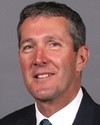Thank you kindly.
Thank you all for being here. It's good to see you again. We've been through this a couple of times at public accounts.
I want to begin first by putting on the record that in 1996, the government announced that the three objectives for the new organization were to: “provide better service to Canadians”, “become a more efficient and effective organization...”, and to “establish a closer partnership with provinces and territories”.
Your department provided this report. In the introduction page of this, you say:
The Report is designed to help parliamentarians understand the government’s objectives in putting the Agency in place, the general scheme of the Act, and its accomplishments over the past five years.
What I want to raise with you is the difference between what you say in this report and what the Auditor General has found.
And I know you're bringing her in separately, but some of these facts still pertain, Mr. Chair. I'm doing this for the sole purpose that this document, if it's meant to be a help to parliamentarians, should be a reflection of the reality within the agency and not just a spin document. That's the premise of why I'm asking these questions.
So to put some colour to that, on page 9 of your report it says that the act,
...has been implemented in a responsible manner that fully observes both the intent and the letter of the legislation.
On page 237 of the Auditor General's most recent review, which is only a few months old, she said the agency,
...approach to assessing files for risk continues to lack sophistication and has major weaknesses that impede the timely collection of tax debts. Further, the Agency still lacks information needed to manage its collection of the tax debt effectively.
Your document, on page 9, states:
...the fundamental transformation of the Agency’s human resource and administrative regimes also served as the essential ingredient in enabling the Agency to meet the third of its objectives: improving service to Canadians.
On page 245, the Auditor General, says:
We found that the Agency does not have a full understanding of the composition of the tax debt and why it is growing.
She further points out, on page 256:
The number of accounts that collection officers maintain in their inventories varies between 15 and 300.
Your document, on page 60, says:
Its risk-assessment processes enable it to target compliance activities towards areas of highest risk and to shift resources to these key areas.
The Auditor General, on page 252, where there are three bullet points, states:
The automatic risk scoring of delinquent accounts was ineffective because the risk assessment was limited mainly to the outstanding balance and the age of the account; other important risk factors either were not considered or did not weigh heavily in the risk scoring.
The risk scores were rarely updated or used to prioritize workload.
There were no profiles of tax debtors for use in modifying basic collection strategies to improve recoveries from debtors who posed a high risk of non-payment.
I have more, but I don't have enough time.
I would also ask the clerk, while you're beginning your response, to circulate--





